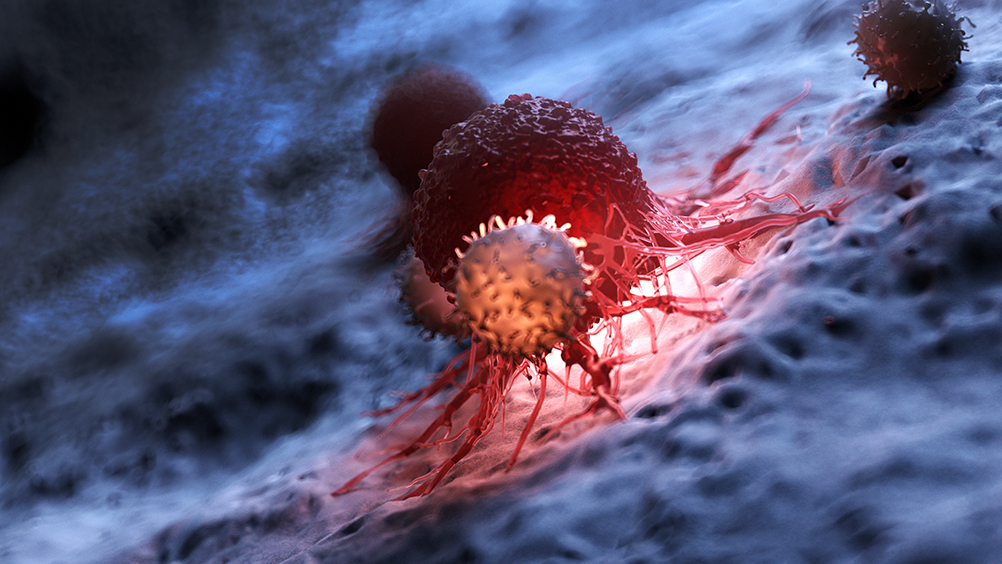In Oncotarget’s Volume 12, Issue 25, cover paper, researchers classified the various expression levels of a potential therapeutic target in nearly 10,000 non-small cell lung cancer tumors.

Lung cancer continues to be the leading cause of cancer deaths world-wide. Variations in the stage of diagnosis, subtypes and types of mutated genes provide a challenge for researchers who are developing targeted treatments to help rid patients of lung cancer. To this end, many researchers are interested in employing cancer-testis antigens (CTAs), which are minimally expressed in normal tissues, but strongly expressed in solid tumors. Therefore, CTAs are appealing therapeutic targets. The Kita-Kyushu lung cancer antigen-1 (also known as KK-LC-1; CT 83; CXORF61) is a CTA that is expressed in 82% of gastric tumors, 53% of breast cancers (higher in triple-negative breast cancer) and in about 33% of lung cancers.
“In lung cancer, surgical series have shown KK-LC-1 to be expressed in about one-third of lung cancer tumors [1, 3–5].”
Researchers—from the University of Southern California, Caris Life Sciences, Fox Chase Center, Georgetown Lombardi Comprehensive Cancer Center, The Warren Alpert Medical School of Brown University, Wayne State University School of Medicine, The Barbara Karmanos Cancer Institute, St. Marianna University, and the University of Utah—conducted a recent study to determine exactly which molecular subtypes of KK-LC-1 expressing lung cancer would be most responsive to a clinical trial involving the treatment of cancer with activated T lymphocytes from the body, or T cell receptor therapy (TCR-T), targeting KK-LC-1. Their research paper was published as cover of Oncotarget’s Volume 12, Issue 25, and entitled, “Molecular characterization of Kita-Kyushu lung cancer antigen (KK-LC-1) expressing carcinomas”.
The Study
The researchers began by aggregating a total of 9790 non-small cell lung cancer (NSCLC) tumor samples from de-identified patients with KK-LC-1 expression ranging from zero to 266 transcripts per million (TPM) RNA molecules. To start characterizing these molecular subtypes, KK-LC-1 expression was classified into four ascending quartiles—patients in Quartile 4 (Q4) had the highest levels of KK-LC-1 expression. Participants were nearly half male and half female, skewing slightly male, and the median age in each quartile was 69. Next, the researchers classified KK-LC-1 expression based on histological subtypes, including adenocarcinoma (mostly pan-wild type), squamous cell carcinoma, adenosquamous carcinoma, and “unclear or mixed” carcinomas. Adenocarcinomas and “unclear or mixed” carcinomas had significantly higher median KK-LC-1 expression than adenosquamous and squamous cell carcinomas. In terms of tumor mutation burden (TMB), Q4 has the highest TMB. Of the histological subtypes in Q4, adenocarcinomas had the highest TMB.
“Meanwhile, in discordance with previous literature, we find that tumors with adenocarcinoma had significantly higher KK-LC-1 expression levels than squamous cell carcinomas (Supplementary Figure 1) [5]. This may be explained by the propensity for patients with molecular profiling to be of more advanced stage and the use of a more diverse North American patient population than prior surgical series [1, 4, 5, 9].”
Conclusion
In conclusion, NSCLC patients with high KK-LC-1 expression had a higher tumor mutation burden. Tumors with higher KK-LC-1 expression also appeared to favor a microenvironment enriched for cells representing innate immunity. The researchers found that actionable mutations, such as ALK, RET and ROS1, were significantly more prevalent in Q1 (low KK-LC-1 expression), whereas KRAS mutations were significantly more prevalent in patients with high KK-LC-1 expression (Q4).
“Our findings show that the KK-LC-1 antigen is associated with a higher mutation burden. This suggests that patients with the highest KK-LC-1 expression are likely those with lung adenocarcinoma without targetable mutations aside from KRAS G12C. From our findings, the most likely candidates for a clinical trial using TCR-T therapy directed against KK-LC-1 would be patients who have been treated with checkpoint inhibitors and less likely to have been treated with tyrosine kinase inhibitors.”
The researchers were forthcoming about limitations of their study. Other potentially useful patient characteristics were not included, as patient info was de-identified. Protein expression measurements were not included, which would have been useful for identifying other compatible therapies. Lastly, the threshold of KK-LC-1 expression relevant for targeted T-cells, or for any other targeted immunotherapy, is still unknown. Future studies are needed to further classify NSCLC patients suitable for T-cell based, KK-LC-1 targeted, immunotherapy.
Click here to read the full research paper, published by Oncotarget.
YOU MAY ALSO LIKE: More Oncotarget Videos on LabTube
—
Oncotarget is a unique platform designed to house scientific studies in a journal format that is available for anyone to read without a paywall making access more difficult. This means information that has the potential to benefit our societies from the inside out can be shared with friends, neighbors, colleagues, and other researchers, far and wide.
For media inquiries, please contact media@impactjournals.com.




